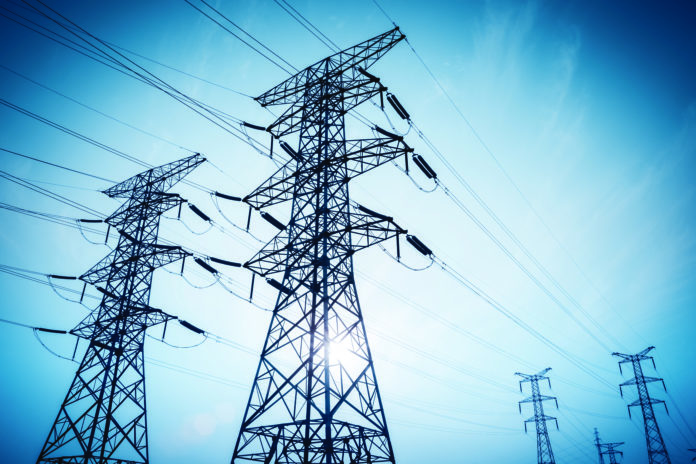Based on time in years between blackouts, the UK’s National Grid is one of the most reliable systems in the world, bettered only by France, South Korea, and Switzerland[i]. However, this does not mean that organisations can ignore the possibility of a blackout event. There have been four large scale blackouts over the last twenty years, plus many more local power cuts affecting fewer people.
Yet these events do not reflect the full picture, as there have been many occasions when we have unknowingly come perilously close to a significant blackout, with only drastic action by the energy providers preventing it from actually happening.
One such ‘near miss’ occurred as recently as 20 July, when parts of London were exposed to risk. Surging electricity demand collided with a bottleneck in the grid, leaving the eastern part of the British capital briefly short of power[ii]. Only by paying a record high £9,724.54 per megawatt hour — more than 5,000% higher than the typical price — did the UK avoid homes and businesses going dark. That was the extraordinary cost of persuading Belgium to crank up aging electricity plants to send energy across the English Channel.
The crisis shows the growing vulnerability of energy transportation networks — power grids and gas and oil pipelines — across much of the industrialized world after years of low investment and not-in-my-backyard opposition. In a normal situation, without the grid bottleneck, the UK should have been able to send power to the southeast of England from elsewhere in the country — even from distant sites in Scotland, where offshore wind farms are producing more than ever. The problem is that the UK, and the other industrialized nations, aren’t investing enough in their grids, leaving the system exposed.
Why the Grid is vulnerable to power failures
Grid overloads are not the only threat to grid power availability. While the grid has designed-in resilience to sudden component failure, this may not always be sufficient. This is what happened on 9 August 2019, when Britain experienced its worst blackout for a decade, leaving over a million people without power[iii].
After a lightning strike, three sources of power generation failed within half a second of one another. 6% of generation, or 1.9 GW, was lost. The grid is only designed to cope with the sudden loss of the largest single component in the power system (normally Sizewell B at 1.2 GW). That could have covered two of these failures, but not all three simultaneously. Not enough power could be supplied to meet demand, and so 5% of customers were automatically disconnected to prevent the grid from complete collapse.
The incident revealed a mix of technical and administrative problems, along with a good measure of bad luck. The whole country, not just the area close to the original lightning strike, was affected equally. The disconnections were made by the regional distribution network operators (DNOs) who run the local wires, and were automatic and pre-programmed.
On top of this, another threat factor is emerging as the traditional grid is currently evolving into the smart grid. This is happening because power generation is becoming less dependent on low numbers of large-scale, polluting but stable fossil fuel generating stations, instead shifting to smaller but more multitudinous units, including many that are based on cleaner, but less predictable renewable energy sources – mainly wind and solar power.
Smart grids integrate the traditional electrical power grid with information and communication technologies (ICT)[iv]. Such integration empowers the electrical utilities providers and consumers, and improves the efficiency and the availability of the power system while constantly monitoring, controlling and managing the demands of customers. However, as smart grid components become visible on line, they become vulnerable to cyber-attacks. A spectacular example of this occurred as far back as 2007, when a Stuxnet virus developed by a hostile state was used to attack an Iranian nuclear power station[v].
How organisations can protect themselves – UPSs and generators
While business endusers, from retail sites and manufacturing plants to hospitals and schools, cannot control such events, they can take steps to protect themselves from their effects. They can use UPSs and, if appropriate, generators to ensure that any sensitive on site equipment is never exposed to dangerous supply transgressions or blackouts. Their exact approach can be tailored to the criticality of their electrical load.
For example, an organization may decide that, in the event of a blackout, it is not essential to keep their IT facility up and running – provided that their equipment, software and data being processed is not damaged by a sudden supply failure. A UPS alone could provide the protection they need: When it detects a power problem and switches over to its battery, it provides a warning signal to its supported load. This gives the load an opportunity to shut down safely and gracefully during the UPS’s battery autonomy.
However, many organizations, especially if they are supporting online transactions, have a crucial need to keep their data processing and communications running continuously through any mains power backout. In such cases, a UPS – generator pair becomes essential. If the mains supply fails, the UPS battery can seamlessly take over while the generator starts up, stabilizes, and is switched over to supply the UPS.
The importance of choosing the right UPS supplier
Organizations can ensure the most cost-effective, yet most reliable power protection solution for their critical load by discussing their requirements with an experienced, well- established and well-resourced supplier like Kohler Uninterruptible Power. Kohler can not only advise on – and supply – an optimum UPS or UPS – generator solution, but they can also ensure that the UPS and generator are correctly paired with one another; this cannot be done without a comprehensive understanding of each product and its specifications.
References
[i] https://www.drax.com/opinion/britains-blackout/#chapter-8
[ii] https://www.bloomberg.com/opinion/articles/2022-07-25/london-s-record-9-724-54-per-megawatt-hour-to-avoid-a-blackout
[iii] https://www.drax.com/opinion/britains-blackout/#chapter-3
[iv]https://www.researchgate.net/publication/258045960_Smart_Grid_Security_Threats_Vulnerabilities_and_Solutions#:~:text=However%2C%20the%20complex%20structure%20of,%5B27%5D%20.%20…
[v] https://www.bearingpoint.com/fr-fr/publications-evenements/blogs/energie/risk-of-cyber-security-attacks-on-smart-grid/




